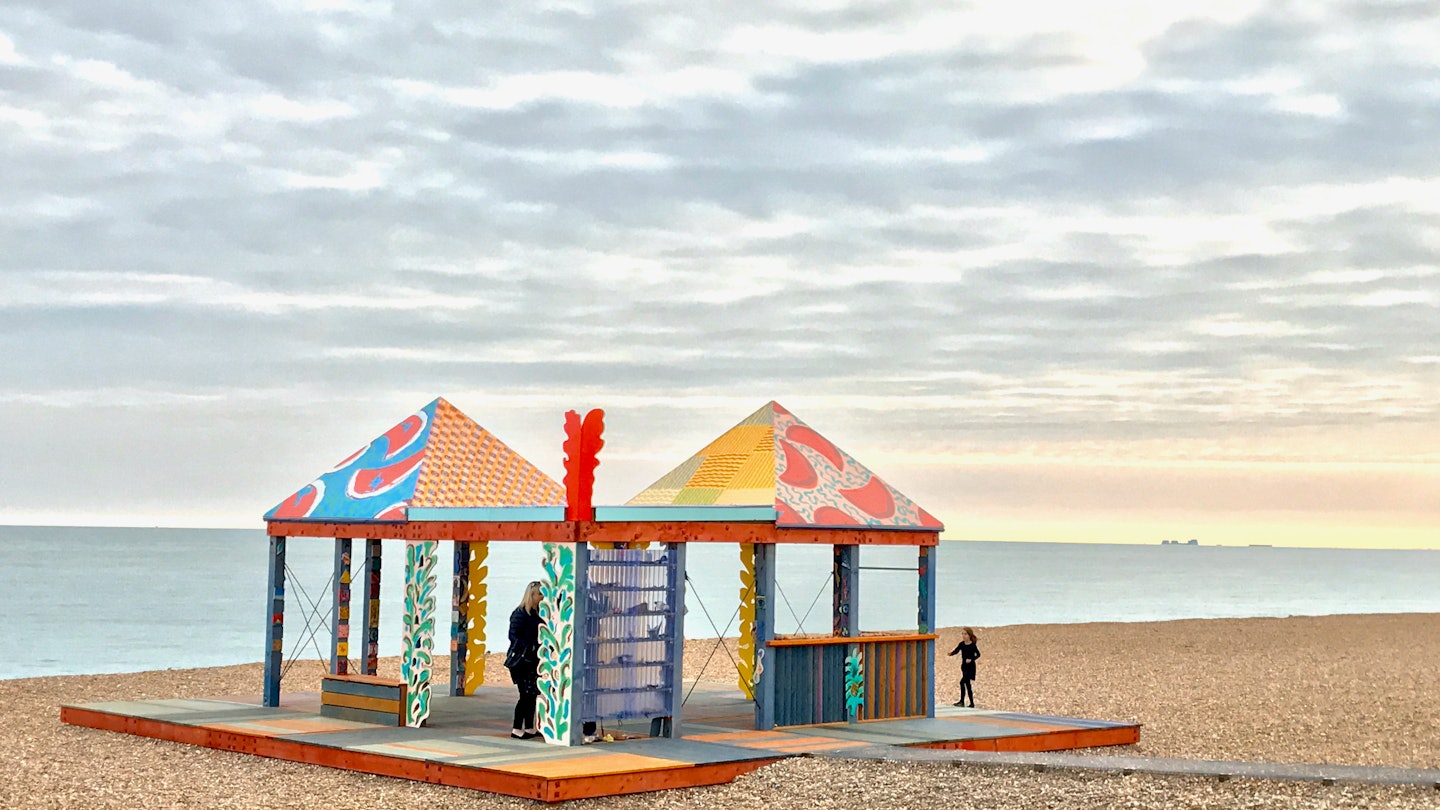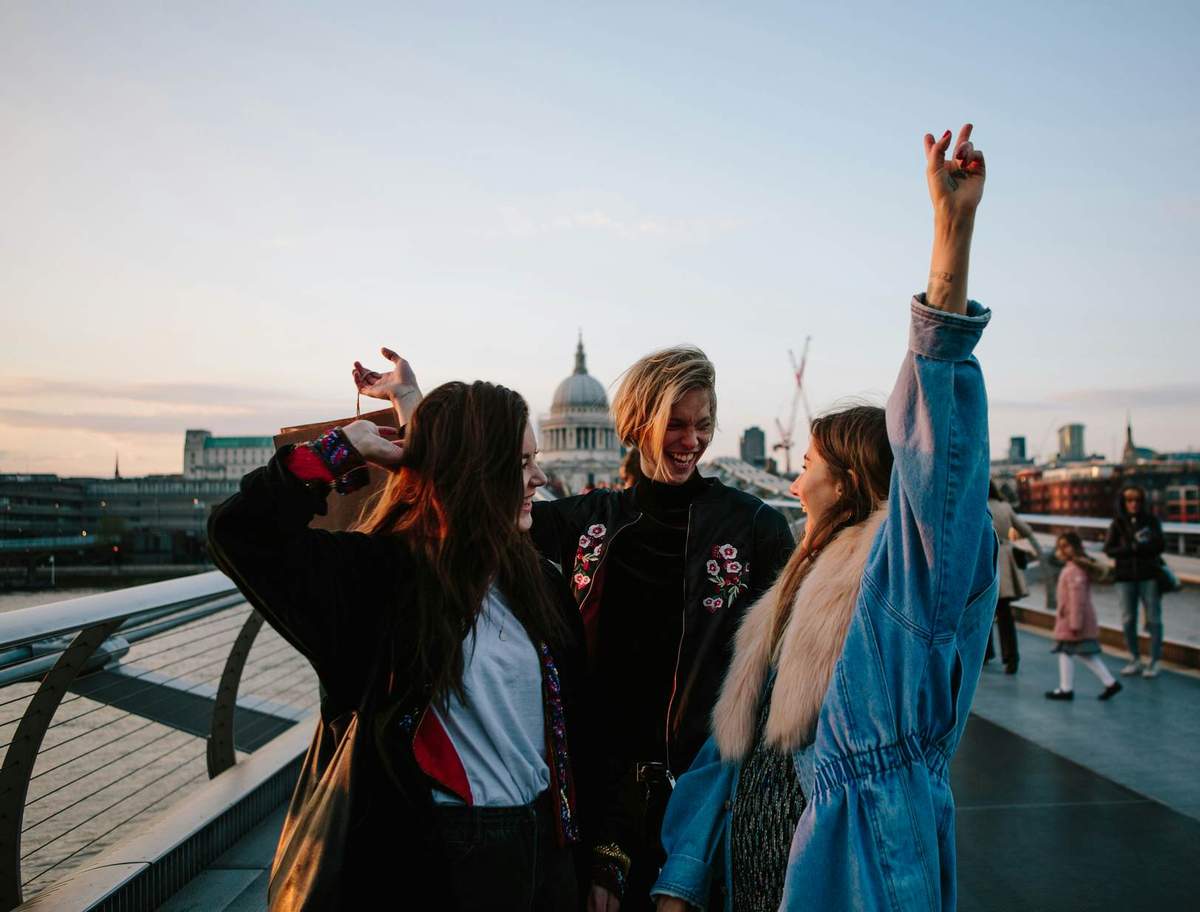

Think of the great British seaside and you may imagine fish and chips, donkey rides, piers and days spent sheltering from the rain along a blustery promenade. But as Blackpool inaugurates an Art B&B and Folkestone gears up for the fifth edition of its internationally acclaimed Triennial in September 2020, it seems contemporary art is increasingly becoming part of the seaside landscape and a key factor in reviving the flagging fortunes of the UK’s coastal communities.

Artist-designed B&B
Long gone are the days when around three quarters of the British population headed to UK seaside for their holidays. For several decades many coastal towns with economies based on tourism have been in serious decline. Even so, as highlighted in a 2019 House of Lords Select Committee report, these resorts are far from dead with the likes of Brighton racking up 11 million visitor nights per year and Bournemouth 10 million.
Leading the pack by a wide margin is Blackpool with 19 million visitors per year, a total helped by the Blackpool Illuminations, the world’s number one free light show along 6 miles of the promenade. Those who have never visited might refer to the British northwest resort as the poor man’s Las Vegas, but as arts professional Michael Trainor likes to point out, in 1900, when the Nevada desert town’s population was just 36, Blackpool was already packing in 1 million visitors.
Trainor has worked in Blackpool for 21 years and was the designer of the world’s largest mirror ball, a 2.4m-diameter installation on the promenade. In December 2019 he helped to launch the Art B&B, official address "180 Promenade between neon and sea". Each of its 19 guestrooms has been designed by a different artist and reflect aspects of Blackpool culture, often in immersive, surprising and original ways.

Pick up one of the four telephones in the glamorous Carnesky Room, the creation of Dr Marissa Carnesky, to hear tales of female stars from Blackpool’s past pleasure palaces. In the Willy Little Ocean Suite, artist Mel Brimfield celebrates the career of the eponymous fictional entertainer with mock posters, mid-century furnishings and a cocktail bar. The deliberately awkward Welcome Inn room, designed by Christopher Samuels, incorporates the kind of challenges disabled guests face staying in a hotel room: a bed that’s tricky to get in and out of and lights and sockets in the wrong places, for example.
Not just a B&B
Other commissioned pieces of art decorate the public areas of the B&B which also has a cafe-bar and events space open to all. Set up as a Community Interest Company (CIC), Art B&B is far more than simply a place to stay. Trainor describes the project as a “Robin Hood intervention, a way of extracting something more sustainable from the visitor economy and putting it back into the community.” Workshops to encourage local talent and regular arts events are held here, including performances by the likes of New Queers on the Block, tapping into the town’s long-standing credentials as an LGBT-friendly destination.

"We are not trying to be a regular Blackpool hotel," says Trainor, pointing out the building’s slate-grey exterior that consciously stands apart from the peacock colours and bright lights the town is best known for. However, Art B&B taps into what Trainor calls Blackpool’s "slow renaissance", which includes extending the promenade tram line to connect to the train station, several major new hotels and a conference centre, the Painting the Town project by community arts organisation LeftCoast, and the Blackpool Museum Project, which will open in 2021 next to the town’s iconic tower, ballroom and circus complex.
More art by the sea
There’s nothing new about British creatives being drawn to the country’s seaside resorts. JMW Turner frequently visited and painted in and around Margate, inspired by the Thanet coast’s tumultuous skies and wind-whipped waves. Views of the Kent resort town and surroundings feature in over 100 of his paintings.
Since 2011, the site where Turner once stayed has been the location of the Turner Contemporary, a contemporary art gallery in a building designed by award-winning architect Sir David Chipperfield. Among the international artists that the gallery has introduced to the town have been Paula Rego, Antony Gormley and local-girl-made-good Tracey Emin. In 2019 the annual Turner Prize was staged here, tempting even hipster metropolitan creatives to give the seaside a go – no wonder the town has gained the nickname 'Shoreditch-on-Sea'.

Festivals in Folkestone
Travel 29 miles around the Kent coast to Folkestone and you’ll discover a different approach to the way that contemporary art can used to reinvigorate a down-at-heel seaside community. Scattered around the town are the Folkestone Artworks, the UK’s largest public art exhibition currently consisting of 74 works by 46 international artists, including the likes of Yoko Ono, Cornelia Parker, Michael Craig-Matin and Mark Wallinger.
The number of these mainly site-specific installations – which range from Tracey Emin’s charming little teddy bear at the train station to one of Antony Gormley’s cast iron figures beneath the Harbour Arm – has been growing since the first Folkestone Triennial in 2008. The fifth edition of this major international arts festival, entitled The Plot, will be held from 5 September to 8 November 2020 and will add around 20 more pieces to the collection.

The Triennial’s success has been the catalyst for several other annual arts events to be added to the Folkestone calendar. Joining the long-running Book Festival in November is the Profound Sound Festival usually held in February, Normal? Festival of the Brain in May and SALT Festival of the Sea and Environment in September. Site-specific performance art is also regularly programmed and curated by Performance Space.
You might also like:
Go off-the-grid with these English seaside huts
Legendary artists' houses you can visit around the world
These UK galleries and museums are beautiful from the outside in















